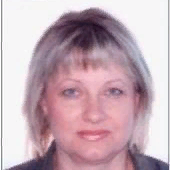International Journal of Engineering and Manufacturing (IJEM)
IJEM Vol. 7, No. 4, 8 Jul. 2017
Cover page and Table of Contents: PDF (size: 540KB)
Design Database for an Automated Control System of Typical Wastewater Treatment Processes
Full Text (PDF, 540KB), PP.36-50
Views: 0 Downloads: 0
Author(s)
Index Terms
Wastewater, automated control system (ACS) of typical wastewater treatment processes, database of ACS of typical wastewater treatment processes, database schema, database subschema of ACS of typical wastewater treatment processes, client-server database archit
Abstract
Current requests, that are advanced to the cleaning parameters of wastewaters, including the offered by the EU community standards, are quite high. To satisfy them, a lot of parameters need to be maintained at a proper level. The presence of a significant number of control points, and a wastewater treatment process management, many situations affect the cleaning process in the case of deviations from the specified conditions, as well as many pollutants indicate that currently structured information for quality cleaning processes management should be available. Even an experienced operator cannot handle the monitoring and management of so many parameters optimally without the relevant database. The modern phase of the water-saving technology enterprises is characterized by large volumes and complexity of the information being processed, by the need for public access to data elements, by high demands to the speed of the information acquisition and its reliability that can be realized under the conditions of the functioning database.
Since the database should not only be a storage, but should also have a link between the different elements, the data structure must be described formally. For that reason, the database subschema was designed (as the conceptual data model) for automation of water-saving processes. With the help of normalization, the hierarchical database model has been reduced to relational. It has significant advantages over the hierarchical and network data structures including the following: clarity of data presentation, ability to use one relational algebra (a language of Codd algebra), as well as simplicity of database reorganization. Due to the lack of a recognized analytical method of database management system selection, the choice of database for automatic water-saving control processes was carried out based on an expert estimations method. To maintain the functioning of the database on the defined criteria, the PostgreSQL database management system has been selected. As a result, that will implement the interface with application software concerning the automation of wastewater treatment technological processes, as well as the main production automation.
Cite This Paper
Anatolii I. Zhuchenko, Liudmyla V. Osipa, Evgeniy S. Cheropkin,"Design Database for an Automated Control System of Typical Wastewater Treatment Processes", International Journal of Engineering and Manufacturing(IJEM), Vol.7, No.4, pp.36-50, 2017. DOI: 10.5815/ijem.2017.04.04
Reference
[1]R. Connor, The United Nations world water development report 2015: water for a sustainable world. –UNESСO Рublishing, 2015. –T. 1. -125 pages.
[2]E. Illarionova I. Syirovatskiy, "Analysis of sewage". Minzdrav RF. – Irkutsk, 2013. – 53 pages.
[3]V. Plehov, V. Dyachenko, I. Dyachenko, "Automation of the processes of biological purification of wastewaters of oil industry enterprises." – Perm.: Bulletin of the Perm National Research Polytechnic Institute. Chemical technology and biotechnology. №14, 2012. pp. 22-33.
[4]D. Ignatev, E. Mitin, "Improvement of the current technological process of sewage treatment of galvanic production from heavy metal impurities and waste generation." Privolzhsky scientific herald. Chemical sciences. №12-1 (52). 2015. pp. 5-9.
[5]O. Kopyilevich, Development of the upper level of the automated process control system for sewage treatment of refining production // Young people and science: A collection of materials of the VIII All-Russian scientific and technical conference of students, graduate students and young scientists dedicated to the 155th anniversary of K. Tsiolkovsky [Electronic resource]. — Krasnoyarsk: Siberian Federal University, 2012. — Access mode: http://conf.sfu-kras.ru/sites/mn2012/section03.html
[6]A. Zhuchenko, R. Osipa and L. Osipa, "Optimization tasks, which are solved in the integrated automated control system of water saving processes.", Bulletin of the National Technical University of Ukraine "KPI named after І. Sikorsky ", ser. "Chemical Engineering, Ecology and Resource Saving ", - 2016. vol. 15, no 1, pp. 108–110.
[7]Ju. Embulaev, M. Volkovoj, N. Matushkin, "Automated process control system for wastewater treatment", System integration, -1999. no 2, pp. 46-51, available at: http://www.cta.ru/cms/f/366618.pdf (Accessed February 08, 2017).
[8]K. Ivanov, A. Efremov, I. Vaschenko, "Database design. The role of the process in the creation of an information system." –Moscow: Young Scientist, - 2016. №18. pp. 40-42.
[9]A. Zhuchenko, L. Yaroschuk, "Fundamentals of Database Design". – Kyiv: 《Agrar Media Group》, 2017. – 158 pages.
[10]J. Martin, "Computer data-base organization." – New Jersey: Prentice-Hall, Inc., Englewood Cliffs, 1977. – 562 pages.
[11]A. Zhuchenko, R. Osipa. "Information retrieval on the World Wide Web". – Кyiv: 《Agrar Media Group》, 2016. – 125 pages.
[12]Vishal Jain, Dr. Mayank Singh, "Ontology Based Information Retrieval in Semantic Web: A Survey", International Journal of Information Technology and Computer Science (IJITCS), Hongkong, Vol. 5, No. 10, September 2013, pp. 62-69.
[13]Narinder K. Seera, Vishal Jain Perspective of Database Services for Managing Large-Scale Data on the Cloud: A Comparative Study. International Journal of Modern Education and Computer Science (IJMECS), Vol.7, No. 6, June 2015, pp. 50-58.
[14]Wang Guan, Wang Xiaolu, Database Design of a General Data Analysis System of Commodity Sales Information, International Journal of Engineering and Manufacturing (IJEM), 2011, No.2, pp. 21-27.


